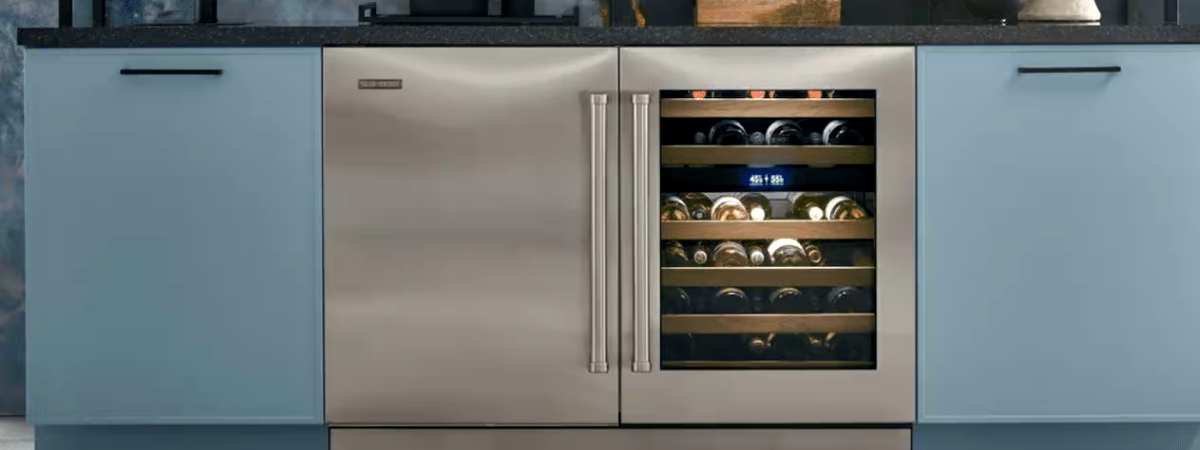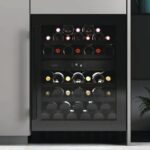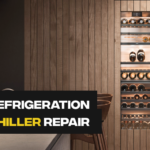Sub-Zero Wine Cooler Condensation Buildup
Post Date: June 20, 2024

Sub-Zero wine coolers are renowned for their ability to preserve wine under ideal conditions, ensuring the longevity and quality of your prized collection. However, even these sophisticated appliances can encounter issues from time to time. Excessive condensation buildup inside your Sub-Zero wine cooler can lead to mold growth, unpleasant odors, and even damage to your wine labels.
Understanding the Cause of Condensation Buildup
Several factors can contribute to excessive condensation buildup in your Sub-Zero wine cooler:
-
High humidity levels: If the ambient humidity in the room where the wine cooler is located is high, it can condense on the cooler’s cooler surfaces, leading to excessive moisture buildup.
-
Frequent door openings: Opening the door frequently, especially in a humid environment, introduces warm, moist air into the cooler, which can condense on the cooler walls and shelves.
-
Overstocking shelves: Overcrowding the shelves can restrict airflow and prevent moisture from properly circulating, leading to condensation buildup.
-
Improper ventilation: If the wine cooler is not properly ventilated, warm air can be trapped inside, increasing the likelihood of condensation.
-
Door seal issues: A damaged or worn-out door seal can allow warm, moist air to enter the cooler, contributing to condensation buildup.
Delving Deeper: DIY Solutions for Sub-Zero Wine Cooler Condensation Buildup
Sub-Zero wine coolers are designed to maintain a perfect environment for your prized wines. However, excessive condensation buildup can disrupt this delicate balance. Here’s a detailed breakdown of DIY solutions to address condensation in your Sub-Zero wine cooler:
1. Control Humidity Levels:
-
Identify the culprit: High humidity in the surrounding environment is a major contributor. Invest in a hygrometer to measure the humidity level in the room where your wine cooler is located.
-
Dehumidifier intervention: If the humidity consistently exceeds 60%, consider using a dehumidifier in the room. Choose a model appropriate for the room size to effectively manage moisture levels.
-
Placement matters: Avoid placing the wine cooler in basements, laundry rooms, or other areas prone to high humidity.
2. Minimize Door Openings:
-
Plan your access: Make a mental list of the wines you might need before opening the door. This reduces the number of times you open it and minimizes the influx of warm, moist air.
-
Quick in and out: Don’t leave the door open while browsing. Grab what you need and close it promptly to maintain a cool and dry environment.
3. Optimize Shelf Arrangement:
-
Spacing is key: Don’t overcrowd the shelves. Bottles need proper air circulation (around an inch) to prevent moisture buildup.
-
Strategic stacking: Place heavier bottles on lower shelves for stability and to avoid blocking airflow for upper shelves.
-
Label efficiently: Labeling shelves helps you locate specific wines quickly, minimizing browsing time with the door open.
4. Ensure Proper Ventilation:
-
Consult the manual: Refer to your Sub-Zero wine cooler owner’s manual to identify the location of air vents.
-
Clear the way: Ensure there’s at least a few inches of clearance around the vents at the back or bottom of the cooler for proper airflow.
-
Dust bunny removal: Use a vacuum cleaner with a brush attachment to gently remove dust and debris from the vents, ensuring proper air circulation.
5. Inspect the Door Seal:
-
Visual inspection: Close the door and look for any visible gaps between the seal and the cooler frame. A flashlight can help identify small inconsistencies.
-
The “paper test”: Gently close the door on a piece of paper placed between the seal and the frame. If you can easily pull the paper out, the seal might be compromised and needs replacement.
-
Sniff test: A properly functioning seal creates a tight closure. If you detect warm, moist air entering the cooler when you stand close, the seal might be faulty.
6. Wipe Down Condensation:
-
Regular cleaning: Use a clean, absorbent cloth to regularly wipe down any accumulated condensation on the walls, shelves, and interior surfaces of the cooler.
-
Don’t let it linger: Promptly wiping down condensation prevents it from pooling and potentially leading to mold growth.
By implementing these detailed DIY solutions, you can potentially address minor causes of condensation buildup in your Sub-Zero wine cooler. Remember, these solutions might not fix more serious underlying issues. If the problem persists or you suspect a more complex problem, it’s crucial to seek professional assistance from a qualified Sub-Zero wine cooler repair service.
Preventive Measures to Avoid Condensation Buildup
To minimize the risk of condensation buildup, follow these preventive measures:
-
Maintain a consistent temperature: Set the wine cooler to the recommended temperature for your wine collection. This helps regulate moisture levels inside the cooler.
-
Clean regularly: Regularly clean the interior and exterior of the cooler to remove any spills or debris that could contribute to moisture buildup.
-
Monitor humidity levels: Use a hygrometer to monitor the humidity levels inside the cooler. Ideally, the humidity level should be around 50-60%.
-
Schedule regular maintenance: Have a qualified technician inspect and service your Sub-Zero wine cooler annually to ensure optimal performance and prevent potential issues.
Sub-Zero wine coolers are designed to safeguard your wine collection, and maintaining a dry environment is crucial for preserving the quality and longevity of your wines. By understanding the causes of condensation buildup, implementing preventive measures, and seeking professional assistance when needed, you can ensure your Sub-Zero wine cooler continues to provide the ideal storage conditions for your cherished wine collection.








